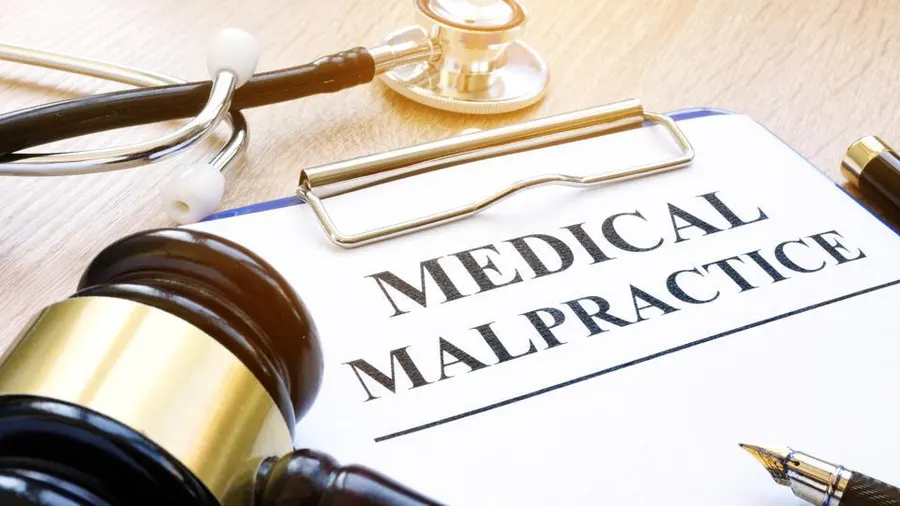Medical Malpractice Laws and Patient Rights

In the intricate web of healthcare, the delicate balance between medical practitioners and patients often encounters challenges. “Medical Malpractice Laws and Patient Rights” delves into the core aspects of this complex relationship, shedding light on the legal landscape, patient rights, and preventive measures to ensure a safer healthcare experience for all.
Understanding Medical Malpractice
What Constitutes Medical Malpractice?
Medical malpractice goes beyond a simple medical error. It involves the negligence or deviation from standard care by healthcare professionals, leading to harm or injury to the patient. Understanding the nuances of what constitutes medical malpractice is crucial in navigating the legal terrain.
Examples of Medical Malpractice Cases
Examining real-life cases provides insight into the diverse scenarios that fall under medical malpractice. From misdiagnoses to surgical errors, exploring examples helps patients comprehend the potential risks they may face.
The Legal Landscape
Medical Malpractice Laws Overview
Each jurisdiction has its own set of medical malpractice laws. Unraveling these laws is pivotal for patients and healthcare professionals alike, ensuring an understanding of the legal rights and responsibilities involved.
Statute of Limitations: Time Constraints
Time is of the essence in medical malpractice cases. Exploring the statute of limitations helps individuals comprehend the time constraints for filing a claim, emphasizing the importance of prompt action.
Elements of a Strong Medical Malpractice Case
Building a strong case involves specific elements that support the claim of negligence. From establishing a duty of care to proving causation, these elements play a crucial role in legal proceedings.
Patient Rights in Healthcare
Informed Consent: A Fundamental Right
Patients have the right to make informed decisions about their healthcare. Unpacking the concept of informed consent reveals how it forms the foundation of patient autonomy.
Confidentiality and Privacy
Privacy is paramount in healthcare. Delving into the measures taken to safeguard patient information fosters a sense of trust between medical practitioners and those under their care.
Access to Medical Records
Access to medical records empowers patients to be active participants in their healthcare journey. Examining the regulations surrounding this access sheds light on the transparency within the healthcare system.
Roles of Healthcare Professionals
Responsibilities of Doctors
Doctors bear significant responsibilities in ensuring the well-being of their patients. Understanding these responsibilities provides a comprehensive view of the doctor-patient relationship.
The Role of Nurses in Patient Care
Nurses play a crucial role in the patient’s healthcare journey. Examining their responsibilities showcases the collaborative efforts within the healthcare team.
Preventing Medical Malpractice
Importance of Effective Communication
Effective communication is a cornerstone in preventing medical malpractice. Exploring communication strategies within the healthcare setting highlights its role in patient safety.
Emphasizing Continuous Education
Continued education is vital for healthcare professionals to stay updated on the latest advancements. Unpacking the importance of ongoing learning showcases its impact on reducing errors.
Navigating the Legal Process
Seeking Legal Counsel
When faced with medical malpractice, seeking legal counsel is a critical step. Understanding the role of legal professionals in these situations provides clarity on the path forward.
Mediation and Alternative Dispute Resolution
Resolving disputes through mediation offers an alternative to lengthy court battles. Exploring these methods demonstrates the potential for amicable resolutions.
Going to Court: The Litigation Process
For cases that proceed to court, understanding the litigation process is essential. From filing a complaint to presenting evidence, each step contributes to the pursuit of justice.
Read More: Patients’ Rights and Medical Ethics in Healthcare Law
Compensation for Victims
Economic Damages: Covering Medical Costs
Compensation for economic damages aims to alleviate the financial burden on victims. Analyzing how these damages cover medical costs provides insight into the financial aspect of medical malpractice cases.
Non-Economic Damages: Pain and Suffering
Non-economic damages account for the intangible losses experienced by victims. Delving into the compensation for pain and suffering reflects the holistic approach to justice in medical malpractice cases.
Impact on Healthcare Providers
Professional Repercussions
Medical malpractice has professional repercussions for healthcare providers. Examining the consequences sheds light on accountability within the medical community.
How Medical Malpractice Insurance Works
Understanding the role of medical malpractice insurance provides a glimpse into how healthcare professionals mitigate risks and protect themselves against potential claims.
Case Studies: Real-Life Scenarios
Learning from Past Incidents
Analyzing case studies offers valuable lessons for both healthcare providers and patients. Exploring the evolution of patient rights through these incidents enhances awareness and prevention.
The Evolution of Patient Rights
The evolution of patient rights over time reflects societal changes and advancements in healthcare. Tracing this evolution provides a comprehensive understanding of the current landscape.
Patient Advocacy Organizations
Empowering Patients through Education
Patient advocacy organizations play a crucial role in empowering individuals with knowledge. Examining their initiatives sheds light on how education can be a tool for change.
Lobbying for Legal Changes
Advocacy groups often work towards legal reforms. Exploring their efforts showcases the potential for positive changes in medical malpractice laws.
Global Perspectives on Medical Malpractice
Contrasting Healthcare Systems
Healthcare systems vary globally, impacting the prevalence and handling of medical malpractice. Contrasting these systems provides insights into different approaches to patient safety.
Cross-Border Legal Challenges
Navigating medical malpractice across borders poses unique challenges. Understanding these challenges is essential for individuals seeking healthcare internationally.
The Future of Medical Malpractice Laws
Technological Advancements in Healthcare
Technological advancements continually shape healthcare practices. Examining their impact on medical malpractice laws anticipates future challenges and opportunities.
Anticipating Legal Reforms
As societies evolve, so do laws. Anticipating legal reforms in the context of medical malpractice prepares individuals for potential changes in the legal landscape.
Read More: Signing a Medical Release for the Insurance Adjuster?
Conclusion
In the intricate dance between healthcare providers and patients, knowledge is power. Understanding medical malpractice laws and patient rights is not only a safeguard but also a catalyst for positive change. By navigating these complexities, individuals can actively participate in their healthcare journey, fostering a system built on trust and accountability.
FAQs
How long do I have to file a medical malpractice claim?
The statute of limitations varies by jurisdiction but generally ranges from one to three years. Consult with a legal professional promptly.
What is informed consent, and why is it essential?
Informed consent is the patient’s right to make decisions about their healthcare. It ensures autonomy and transparency in medical procedures.
Can I seek compensation for non-economic damages in a medical malpractice case?
Yes, non-economic damages, covering pain and suffering, are often compensable in medical malpractice cases.
How can healthcare professionals prevent medical malpractice?
Effective communication, continuous education, and adherence to best practices are key to preventing medical malpractice.
What role do patient advocacy organizations play in medical malpractice cases?
Patient advocacy organizations empower individuals with knowledge, offer support, and contribute to positive changes in healthcare laws.










